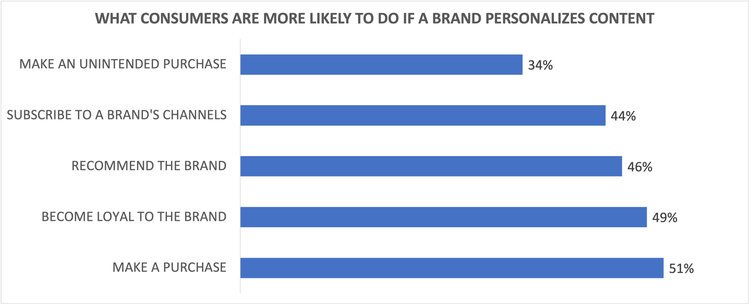Zero-Party Data Collection Offers Brands Long-Term Solution to Death of Third-Party Cookies
Changes to data collection practices are forcing marketers to innovate. First-party and zero-party data solutions offer the best experiences for consumers.
Apple stoked the data privacy fire with its recently released App Tracking Transparency feature as part of the iOS 14.5 update. Early indications are that users appreciate the option. One survey found only 12% of worldwide users opted to keep app tracking (just 4% of users in the U.S.). It was a clear and bold statement from consumers that data collection is a concern for them.
When you combine these consumer concerns over data privacy with Google’s declaration to kill third-party cookies by 2022, Apple’s requirement for opt-in consent for its Identifier for Advertisers (IDFA), and mounting government regulations on standard data collection practices, brands and retailers are left in quite a bind: respect consumer privacy while still providing the personalized and memorable experiences they’re demanding.
To address this contradiction, many marketers are ditching third-party methods. Some are turning to contextual targeting, probabilistic audience modeling, or walled-garden, second-party data from publishers. The preferred course of action for most is to rely more heavily on first-party data. Indeed, first-party data has been heralded as the gold standard for marketers. And while valuable, in today’s fully digital retail environment first-party data still isn’t enough. To satisfy the demands of modern consumers, brands will need zero-party data solutions.
First-party data is great, but…
The value of first-party data is clear. Because you collect this information from interactions such as transactions or customer support exchanges, it’s (hopefully) accurate, legally obtained, and you own it. But there are still limitations to first-party data.
A primary deficiency with first-party data is that you likely just don’t have enough of it. It could be that users don’t want to share the information with you; it could be you don’t have an effective collection process. Maybe you’re a small or relatively new brand and just don’t yet have a wealth of accumulated information.
A more subtle deficiency in first-party data is how actionable it can be. While details within most first-party data are indeed critical, building relationships with customers requires a deeper knowledge of them – to understand more than just demographics. To build relationships with consumers, you need to understand their interests, goals and preferences. That’s where zero-party data fills the gaps.
The term “zero-party data” is credited to Forrester, who defines it as “data a customer intentionally and proactively shares with a brand. It can include preference center data, purchase intentions, personal context, and how the individual wants the brand to recognize them."
The key attribute is that zero-party data is explicitly provided by the customer as opposed to inferred or tracked. It is information the customer is willfully providing to the brand in exchange for a perceived value. That value could be content or a personalized experience, for example.
Importantly, there’s no underhanded, invasive, or creepy nature to its collection. Most of all, zero-party data becomes your most valuable information because it’s the most actionable and builds the foundations of customer relationships.
“The right path for each stakeholder will be different, but the cornerstone effort should be to create and sustain consumer relationships that produce a value exchange, meaning content from or access to publishers and platforms in exchange for personal data, that is based on trust.”
– McKinsey & Company
The need for zero-party data collection
More than half of marketers entered 2021 prioritizing digital experiences and/or strategies to collect more first-party data, according to Merkle's 2021 Customer Engagement Report. Almost six in 10 of those surveyed said first-party data collection and storage was a high priority, with three in 10 calling it their highest priority.
The report also noted that first-party data collection topped other updated tech solutions like identity resolution (36%) or omnichannel orchestration, such as a customer data platform (26%). Furthermore, more than a quarter of marketers (28%) had concerns about running out of budget trying to navigate these types of cross-platform management.
Thus, the clearly preferable path forward for brand marketers is to have their own data – and not simply data that lets brands know who their customers are, but what they want. As the Merkle report put it: "Marketers don't have to infer customer preferences or behavior through secondary behavior but are instead explicitly told, straight from the source. The best zero-party data is when the customers trust the brand and are willing to volunteer their data with the understanding that it will improve their experience."
"Marketers don't have to infer customer preferences or behavior through secondary behavior but are instead explicitly told, straight from the source. The best zero-party data is when the customers trust the brand and are willing to volunteer their data with the understanding that it will improve their experience."
- Merkle 2021 Customer Engagement Report.
The zero-party and personalization parallel
The term “personalization” has seen plenty of use in marketing circles for a few years now. Brands are told they need to offer personalized experiences in order to succeed, and those that do will reign. But personalization is becoming a fundamental expectation of today’s consumers. Soon enough personalization will simply be the cost of entry for marketing to consumers. Next up are contextual experiences. Already, two-thirds of consumers say it’s important for brands to adjust content based on their current context.
Loni Stark, senior director of strategy and product marketing at Adobe, declared, “It’s becoming harder and harder to stand out. That’s why many brands are setting the bar higher by engaging with customers on a personal level with content and messaging that is personalized, relevant, and more likely to garner engagement.”
Zero-party data allows this, because it is actionable. The more you can personalize and delight consumers, the more data they will provide you. And, best yet, the more likely they are to buy from you and advocate for you.
SOURCE: ADOBE
How to collect zero-party data through your product
Consumers are all over the place when shopping and buying. According to Adobe research, 48% will visit a brand’s website to research products. When it comes to the actual purchase, 59% will go to an online marketplace while 49% choose a physical store (58% of consumers use a smartphone or connected device in a store to help inform their purchases). Then, following the purchase, half return back to the brand’s website in order to engage.
That’s a lot of jumping around, and a lot of effort for consumers. Brands can simplify this by creating a singular connection point for research, engagement, and even purchase. Better yet, this engagement point can be the actual product itself.
NFC technology provided through the WaveOn RelationTech™ platform allows brands to engage and delight consumers, while accumulating the valuable zero-party and first-party data that spins the customer activation cycle.
Collecting zero-party (and first-party) data will be essential for brand marketers as doors close on third-party tracking. Those getting an early start will set the pace and reap the biggest rewards from their data. Consumers aren’t waiting to raise their expectations, so brands can’t afford to wait on meeting them.


